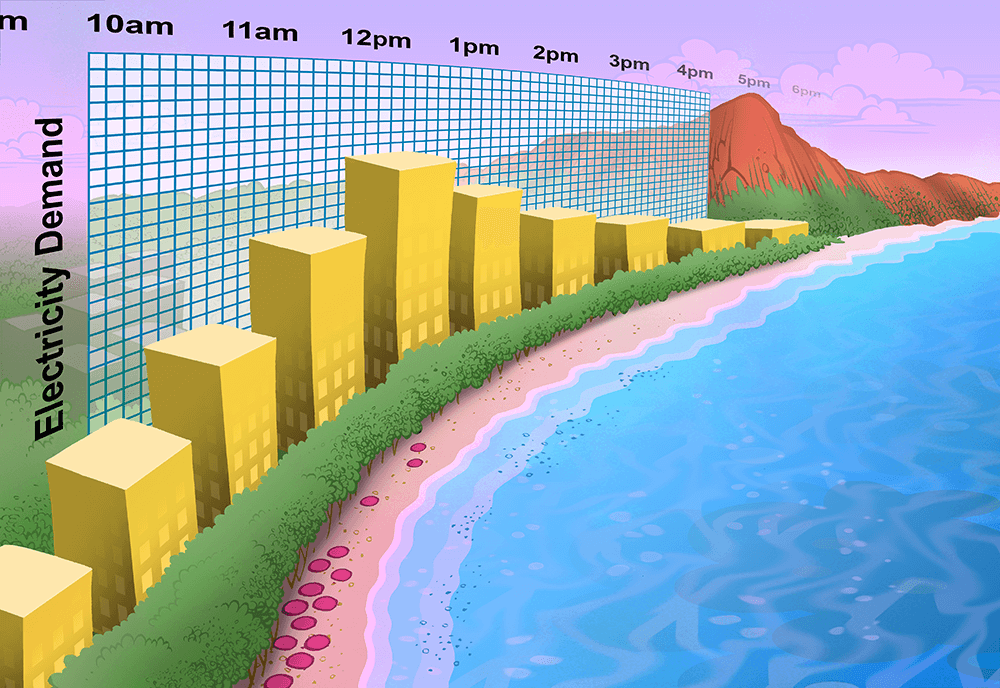Demand Response, Waikiki Style

At three large hotels on Hawaii’s Waikiki Beach, researchers have demonstrated that a new, “fast” type of demand response can yield significant load reductions without sacrificing customers’ comfort. The project was a collaboration among EPRI, Hawaiian Electric Company, and the U.S. Department of Energy’s Lawrence Berkeley National Laboratory.
Demand response can offer a cost-effective option to balance intermittent generation from widespread deployment of rooftop solar in Hawaii. During traditional demand response, utility customers reduce energy use for 3–6 hours during peak load periods, with advance notice ranging from 12 hours to 2 days or more. With fast demand response, buildings are asked to reduce load for an hour, with as little as 10 minutes of advance notice. Because of the shorter demand response periods and flexibility to implement them over a much longer window (7 am–8 pm), this approach offers potential for deeper load reductions.
Researchers implemented new control technologies for in-room thermostats and ice and soda machines at the hotels, which have peak loads ranging from 500 kilowatts to 3 megawatts. The tests showed that 10–15% of total building load could be shed during fast demand response, with a total load reduction of up to 1 megawatt. The primary reduction came from the chillers; other reductions included heat pump water heaters and swimming pool heating.
The buildings’ latent capacity enabled them to pass through a 1-hour cooling load reduction without substantial loss in comfort, as verified by customer surveys. This outcome is significant for the hospitality sector, which has historically been reluctant to participate in demand response because of concerns that it might sacrifice customer satisfaction.
EPRI’s new Advanced Buildings program is conducting various research projects examining how buildings can serve as a grid resource.
Key EPRI Technical Experts:
Ram Narayanamurthy
For more information, contact techexpert@eprijournal.com.
Artwork by Kirk Anderson

